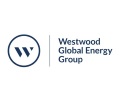The Middle East is a major contributor to the demand for onshore drilling rigs and accounts for around 10% of the world’s identified drilling rig fleet. Compared to other regions, demand for onshore drilling rigs in the Middle East remained relatively stable in 2020 despite the impact of the Covid-19 pandemic on oil and gas demand and the subsequent implementation of OPEC / OPEC + production cuts. The number of onshore drilling rigs in the Middle East decreased by approximately 18% in 2020, compared to approximately 50% in Latin America and North America.
How is the E&P operator (NOC and IOC) focused on streamlining costs and improving operational efficiencies to impact onshore rig technology needs in the Middle East?
Mechanization and automation remain central focuses
Operators continue to emphasize the importance of drilling rig efficiency and reducing downtime during the drilling process, with the main focus on mechanization and automation. This is particularly the case in markets such as Oman, where large numbers of wells must be drilled to sustain production from low-productivity mature oil fields. In addition, the acidic oil and gas fields in the south of the country are typically located at extreme depths (up to 5 km) with high technological demands on components such as drills to improve operational efficiency and project economics.
The nature of onshore field developments in Oman typically requires twin rigs (where the derrick can support two drill pipe connections) equipped with hydraulic walkways that reduce the amount of pipe handling and minimize operational hazards. The ability to mobilize a drill rig quickly and efficiently between well sites is also important, with a skid mounted drill rig and bearing load typically being an important requirement in Oman.
Given the demand for automated equipment, operators are expected to increasingly prefer real-time and remote monitoring features, with equipment that offer these features likely to be in a strong position to achieve higher daily rates. The onshore market in Oman in particular is characterized by the presence of prominent IOCs (e.g. BP and Occidental) as well as established international rig contractors such as KCA Deutag, Schlumberger and Ensign Energy Services Inc. This dynamic drives automation and mechanization. International operators have high KPIs and standards in terms of safety and efficiency, as well as willingness to pay for technology that enables them to meet these standards. In a highly competitive marketplace, rig contractors are increasingly required to adopt new technology to strengthen their offerings in the competition for contracting.
The shift in technological demands reflects the need for better control and efficiency
In Kuwait, rig technology requirements have also evolved in recent years to reflect the need for better control and efficiency in drilling operations. In particular, the country has targeted the development of high pressure gas resources from the Jurassic gas fields in northern Kuwait as well as the development of its heavy oil fields, with production starting in the Ratqa field in February 2020.
As a rule, new-build systems must have AC power supply systems that enable better optimization and control of the power distribution, whereby integrated power supply systems such as the Amphion system from NOV are also preferred. Drilling deeper high pressure wells with larger volumes of mud has also resulted in higher specification requirements for mud pumps, with an operating pressure of 7,500 PSI typically being required.
Ensign Energy Services Inc mobilized two 3,400 horsepower automated drilling rigs in Kuwait in 2019, which are currently operated under five-year contracts. KCA Deutag also spudged its first well in the country in 2020 using the T-82 rig, a 3,000 hp unit equipped with an AC system and three 7,500 PSI mud pumps.
Implications for Daily Rates in the Middle East
Westwood’s market research shows that daily rates in the Middle East can range from under $ 20,000 for a low horsepower rig (under 1,500 hp) to over $ 50,000 for a heavy duty 3,000 hp + rig in markets like Kuwait and the United Arab Emirates. In Kuwait, drilling deeper high pressure wells requires highly specified, high powered rigs with premium daily rates.
While the number of active rigs in the Middle East is expected to improve year over year through 2025, operators are under increased pressure to reduce the cost of their drilling operations. Westwood’s Base Case Drilling outlook suggests that the supply of onshore drilling rigs will continue to exceed demand in most of the Middle East over the forecast period (through 2025). In these circumstances, onshore drilling rigs with features that automate the drilling process, reduce downtime and improve safety are better positioned to achieve higher daily rates.
Source: Westwood Energy


Comments are closed.